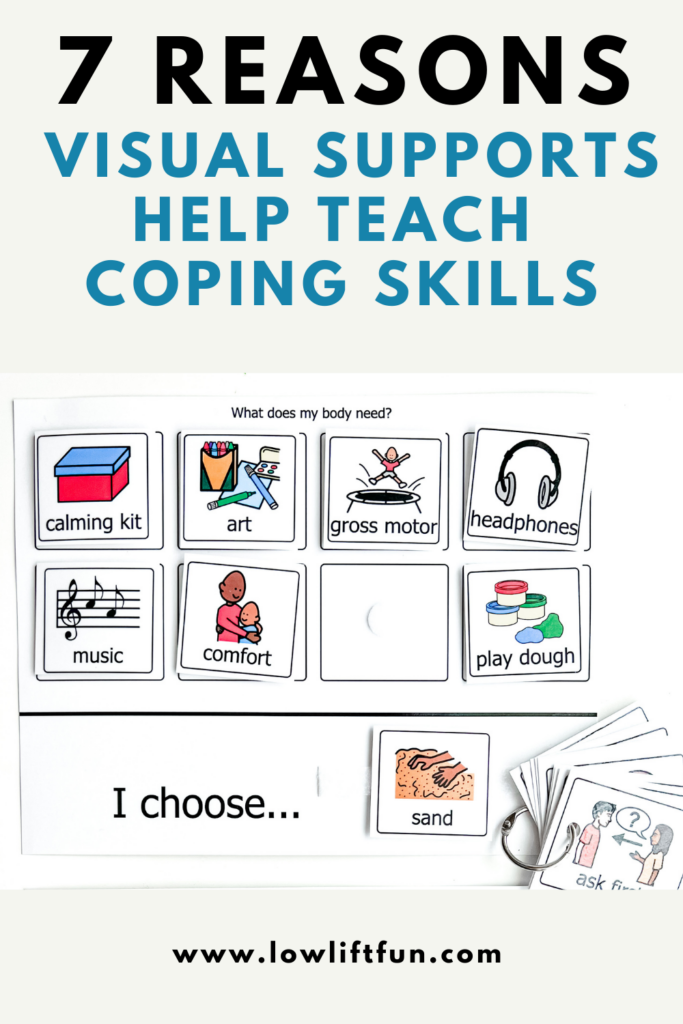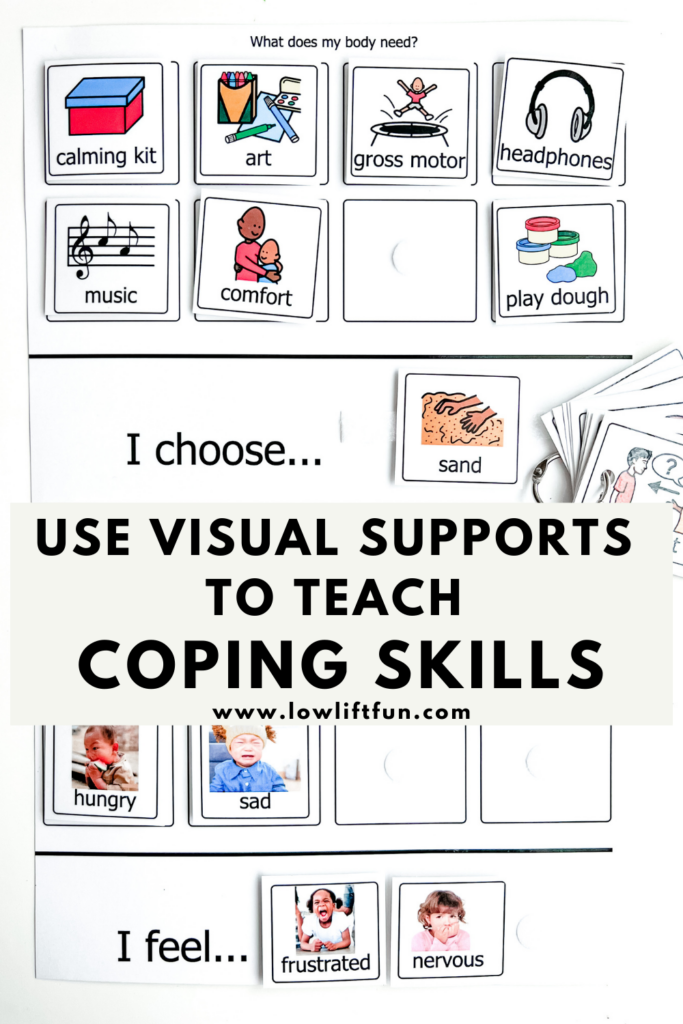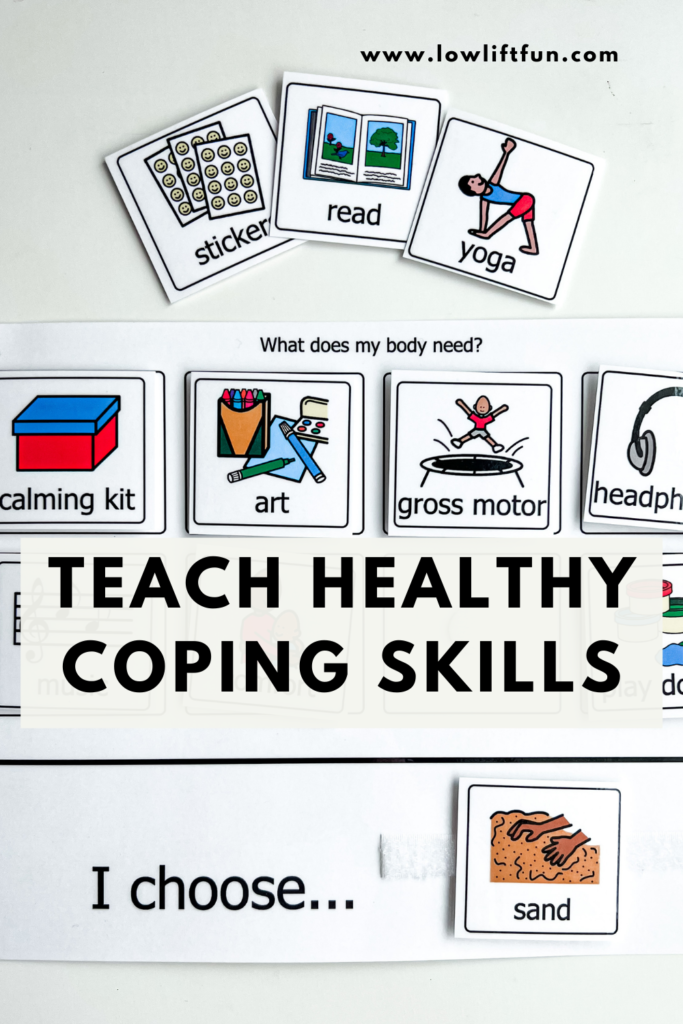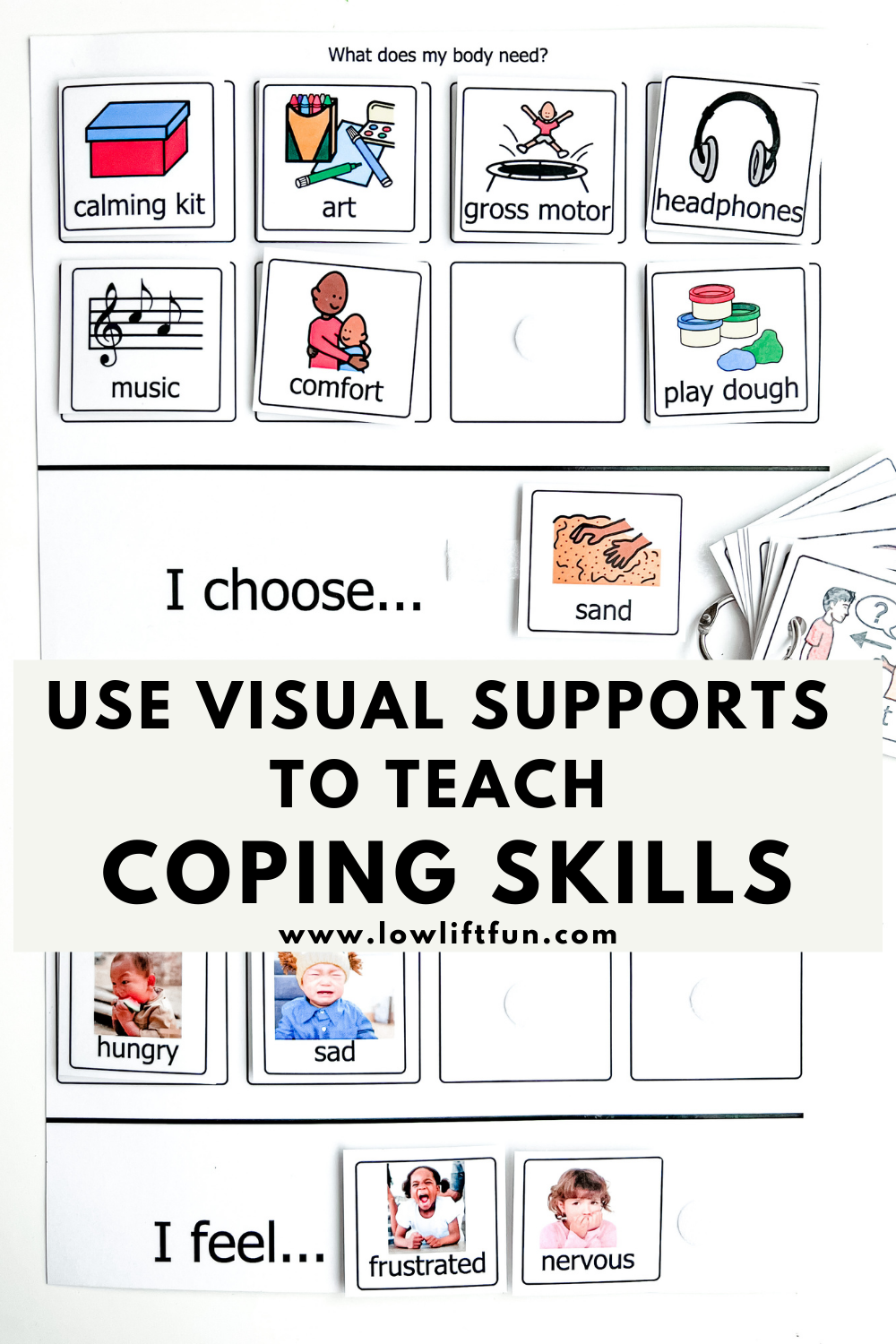Are you teaching kids coping strategies?
Visual supports are a tremendous help when teaching children about coping strategies and coping skills. Here are 7 reasons why visual supports will help you and your children when teaching coping strategies.
7 reasons I use visual supports to teach coping strategies:
1. Choice boards list a child’s coping strategies – this helps kids understand the available options.
By showing kids what coping strategies they can choose from, we’re positively framing the available options. Instead of telling kids what they can’t do or have to stop doing, we’re showing them what they CAN do. For example, they may be able to choose from their calming kit, play dough, headphones, a gross motor activity, etc.
2. Visual supports for coping strategies set kids up for success.
Kids want to have choices and power – we all do, right? By offering a variety of choices in a visual format (that we’ve already decided we’re ok with!), we empower our kids to make the choice that feels right for THEM. This sets them up to have success.

3. Reduce fighting and power struggles with visual supports!
When kids know their choices and the environment is predictable, they are more likely to cooperate, connect, and collaborate with us. As a result, we see fewer challenging behaviors when our kids understand the expectations.
Providing clear choices decreases the likelihood of more challenging behaviors. (Not a magic fix of course, but it can help A LOT.) Coping Strategies Choice Boards are the perfect combination of communicating clear expectations and empowering kids with choices. This results in more positive interactions, cooperation, and connection with our child.
4. Visual supports for kids coping strategies build pride, ownership, and emotional literacy.
We’re empowering our kids to understand how their bodies calm down – how they can handle big emotions in ways that feel good for them. How incredible is that?
One size does not fit all! Some adults calm down with music, some need to go for a run, some folks need to sit down and create. Offering visual supports with calming strategy options teaches our children how to try out and identify the calming strategies that feel good for their mind and body.
5. Visual supports for kids coping strategies can be used in LOW STRESS moments to build skills that will be used in high stress times.
Work with children during low stress, positive moments to explore the calming strategies. Teach them about the choices on the board, what are and where are they in your space? What are they most interested in? Then try out a role play. Let them be the grown up, and you practice being the kid – switch roles and practice a scenario again!
You’re helping your child to begin processing emotions and ways to regulate their emotions BEFORE the challenge has even happened!

6. Choice Boards with Coping Strategies create a more positive environment for kids AND adults.
Visual supports help children to choose a coping strategy and move towards greater independence in regulating their emotions. Visual reminders can also reduce the amount of verbal correction or prompting our children are receiving – visual supports are a win-win all around!
7. Visual supports for kids’ coping strategies are a great tool for ALL kids.
Visual supports are a helpful learning tool for ALL children, particularly those in preschool, kindergarten and elementary school. Choice Boards for coping strategies can also be a game changer for children who are spirited, highly sensitive, Autistic, have ADHD, or other special needs.
Ready to get started teaching Calming Strategies and Coping Skills?

Thank you reading and learning about how I use Visual Supports to teach Coping Strategies! Remember to sign up for the Low Lift Fun email list to get easy kids’ activities and parenting tips delivered straight to your inbox!

One thought on “Use Visual Supports to Teach Coping Strategies”
Comments are closed.